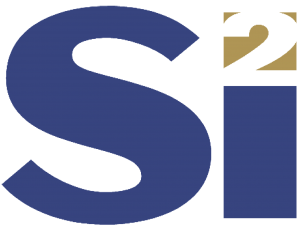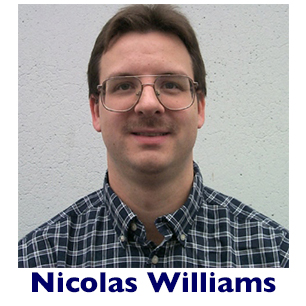
By Marshall Tiner
Director of Production Standards
Si2
What is open about Si2 OpenAccess?
It seems these days everything is “open,” and the terms get confusing. Here is a short history of a few key areas to help clarify things. The label “open source” is credited to the free software movement of 1998. In February of that year, the Open Source Initiative (OSI) was founded and the Open Source Definition adopted. OSI tried to trademark the term “open source,” in an effort to control its usage.
So, what does open source mean?
The term refers to a licensing methodology whereby the source code is made publicly available. Depending on the license terms, others may then download, modify, and publish their version (fork) back to the community. The Apache Software Foundation’s license has become a standard within the open source world.
Silicon Integration Initiative (Si2) was born out of the 1988 CAD Framework Initiative (CFI), with a goal of enabling design tool interoperability. Cadence developed the OpenAccess API to standardize the design database, which resulted in interoperability between design databases from different tool suppliers. With the contribution of the OpenAccess API, the OpenAccess Coalition was formed within Si2. To the design tool user this meant a huge productivity increase when using tools from different suppliers.
Before the OpenAccess Coalition, designs, measurements, and results were passed back and forth between tools via time-consuming, error-prone, file transfers. OpenAccess in effect “opened” the design database so all coalition members could develop tools that shared the database. This removed the cost of the file transfer and allowed two tools to act upon the same data. While file transfer seems like a small thing, it can represent significant cost-of-engineering time on a large design. In addition, it enables the user to check-fix-check errors one at a time instead of several at a time, reducing long file transfer time. Ultimately it benefitted the entire industry enabling “best of “design flows, which are very common today.
So is OpenAccess open source software?
The answer is no. The difference is who the software is open to. OpenAccess is licensed much like open source software, though not open to the general public. The license requires Si2 membership which helps provide the resources required to keep the standard viable for use. There is a significant resource investment associated with OpenAccess. OpenAccess Coalition members have access to the source code and some of the derivative products (called Extensions) to use and even modify if necessary. Much like the Open Software Foundation works for the general public, Si2 and the OpenAccess Coalition provide a means of collaborative development for design product interaction/interoperability. The really great part is that the members realize a 1/N cost advantage developing the standard together rather than each doing it alone.
Is Si2 OpenAccess “open?”
Yes, OpenAccess is open to the OpenAccess Coalition membership, which consists of many electronic design automation tool development companies, and semiconductor companies, that’s pretty open.
Membership cost is based upon the company revenue to allow an easy entry point into the EDA business. A small company can quickly become compatible with the larger suppliers and “plug right into the design flow”. There is no better way to take a new EDA company into the market. Come join the OpenAccess Coalition and align the future with your company’s needs.

 Udi Landen is Vice President of Engineering at Qualcomm Technologies, Inc. In his current role, Landen provides technical, management and business leadership for engineering teams at various international sites that focus on mobile and computing design enablement and CAD methodology automation roadmaps. Prior to joining Qualcomm in 2013, Landen held executive and leadership roles at Altera Corp., Mercury Interactive and Cadence Design Systems. He is a graduate of the Technion, Israel Institute of Technology.
Udi Landen is Vice President of Engineering at Qualcomm Technologies, Inc. In his current role, Landen provides technical, management and business leadership for engineering teams at various international sites that focus on mobile and computing design enablement and CAD methodology automation roadmaps. Prior to joining Qualcomm in 2013, Landen held executive and leadership roles at Altera Corp., Mercury Interactive and Cadence Design Systems. He is a graduate of the Technion, Israel Institute of Technology. Seungbum Ko is vice president of the Samsung Electronics Design Technology Team. He is responsible for all memory design methodology activities for the Samsung memory division, and also manages the relationships between memory division and EDA vendors. A 21-year veteran at Samsung, Ko’s expertise includes development of SDRAM, DDR, DDR2, DDR3, LPDD2, LPDDR3 and LPDDR4 devices. His internal honors include the Proud Samsung Award, the Jang Young-sil Award, and the Memory Award.
Seungbum Ko is vice president of the Samsung Electronics Design Technology Team. He is responsible for all memory design methodology activities for the Samsung memory division, and also manages the relationships between memory division and EDA vendors. A 21-year veteran at Samsung, Ko’s expertise includes development of SDRAM, DDR, DDR2, DDR3, LPDD2, LPDDR3 and LPDDR4 devices. His internal honors include the Proud Samsung Award, the Jang Young-sil Award, and the Memory Award.

 Paul Stabler, senior engineering manager in the IBM EDA organization, has been elected chairman of Si2 OpenAccess Coalition for 2017. He replaces Rudy Albachten of Intel, who assumes an advisory role as vice chairman.
Paul Stabler, senior engineering manager in the IBM EDA organization, has been elected chairman of Si2 OpenAccess Coalition for 2017. He replaces Rudy Albachten of Intel, who assumes an advisory role as vice chairman. Nicolas Williams of Mentor Graphics has been elected to the Si2 Extensions Steering Group. The ESG determines which Si2 OpenAccess Coalition extensions become OAC working groups and move forward for possible industry standardization. At Mentor, Nicolas is responsible for specifying and leading product direction of Tanner tools for analog, RF and MEMS devices. He also leads PDK conversions efforts for Tanner tools and works closely with customers to develop application specific EDA solutions.
Nicolas Williams of Mentor Graphics has been elected to the Si2 Extensions Steering Group. The ESG determines which Si2 OpenAccess Coalition extensions become OAC working groups and move forward for possible industry standardization. At Mentor, Nicolas is responsible for specifying and leading product direction of Tanner tools for analog, RF and MEMS devices. He also leads PDK conversions efforts for Tanner tools and works closely with customers to develop application specific EDA solutions.